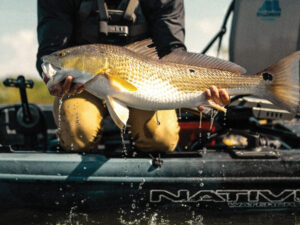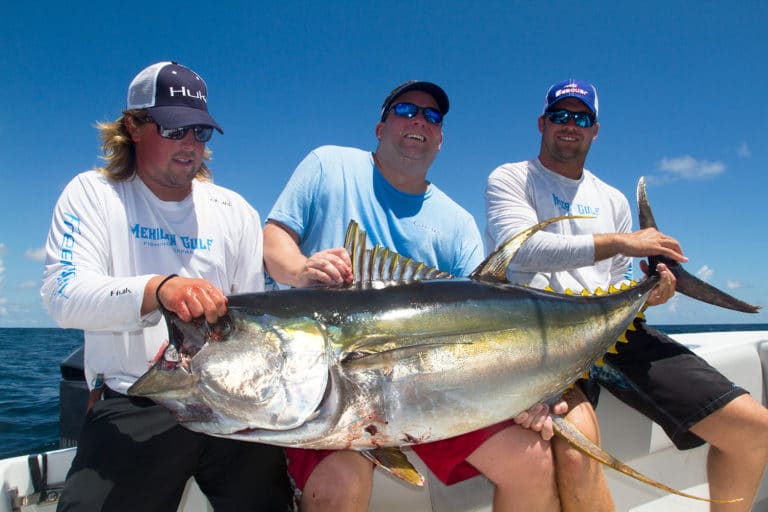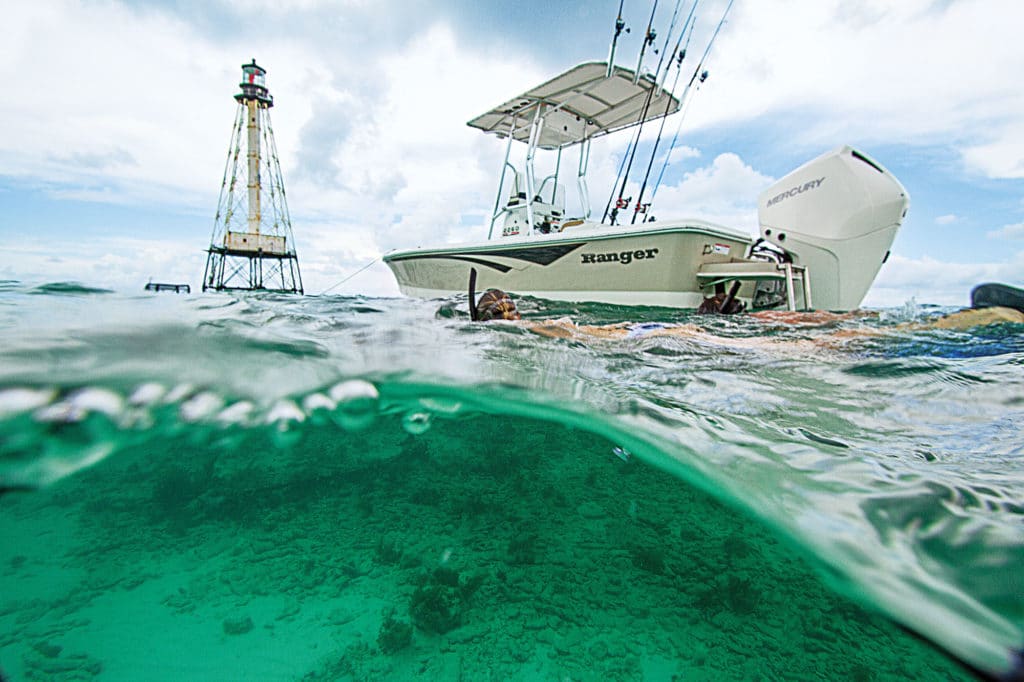
Bay boats are a hot category, and those over 23 feet are commonly seen offshore in calm weather. In fact, if you look at the offshore anglers who plan to buy center-consoles under 25 feet, a good share of them are betting on a center-console bay boat to hedge their bets against rough weather by fishing inside the inlet. Ideally, a bay boat will have at least 30 gallons of livewell capacity, and some have an additional smaller well for crustaceans such as shrimp or crabs, particularly, in tarpon county.
Fishing bays is probably a more intimate experience, as reflected by the smaller crews of only one to two plus the skipper in 54 percent of cases. Inshore fishermen are still tackle intensive, with 65 percent carrying five to 10 rods. Clearly there will be some downtime; 46 percent want dedicated rod storage for seven to 12 rods — expect to see them at the sand bar.
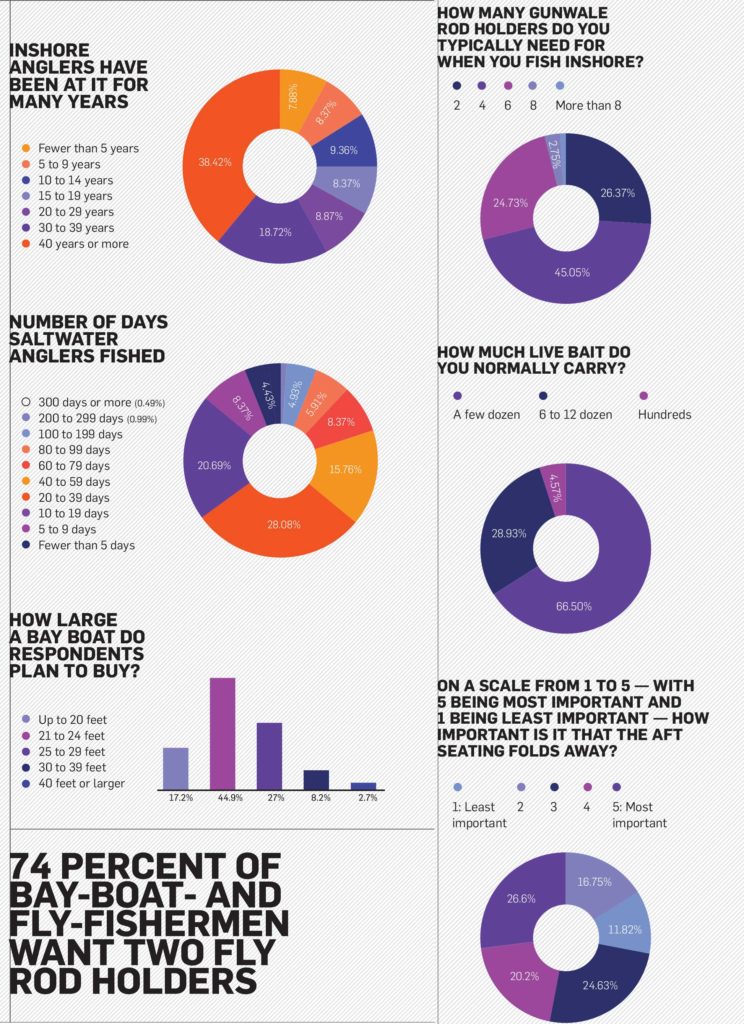
The demand was slightly less for gunwale rod holders, down to 42 percent with six, and 34 percent good with just four.
Only 8 percent would spend up to $400 to add a pair over six, confirming the respondents’ lack of interest.
Bay-boat fishermen seem to have a lot in common with fly-fishermen, apparently because 74 percent want rod holders for two fly rods. Oddly, 64 percent said storage for two utility boxes on deck was plenty, but 54 percent said their boat’s tackle storage was inadequate. Twenty-six percent wanted storage for four boxes, and a demanding 2.6 percent wanted storage for more than eight; 49 percent wanted two livewells, reserving one for crustaceans.
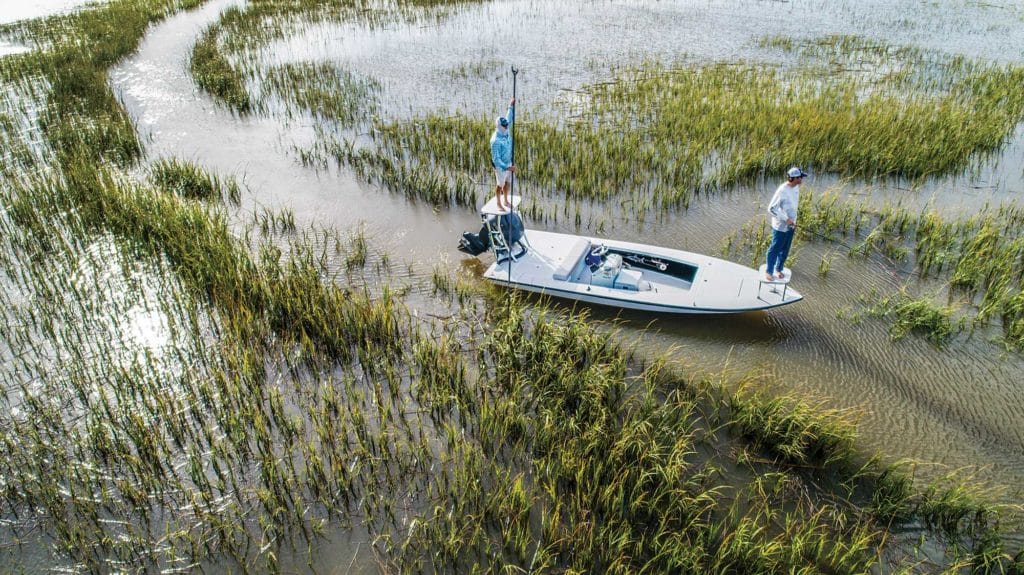
Flats/Skiffs
By Alex Suescun
Flats skiffs enable anglers to venture onto shallows only inches deep, as well as narrow coastal creeks, bayous and canals, where redfish, bonefish, snook, tarpon, speckled trout, striped bass, and other game species seek refuge and forage. These boats are very maneuverable, glide stealthily when propelled with a push pole or trolling motor, and are easy and inexpensive to operate and trailer.
Size Matters
While most flats skiffs sport a 6- to 7½-foot beam, they range in length from 15 to 21 feet, accommodating two to four anglers (depending on size selected) and providing a stable platform with roomy, raised decks fore and aft from which to cast and battle fish unencumbered.
Poling skiffs such as the Maverick 17 HPX-S float in as little as 6 inches of water, perfect for targeting tailing fish. However, inshore anglers who enjoy live-baiting frequently find more-adequate livewells with better aeration systems on larger models such as the Spyder FX19 Vapor, which has three 70-quart wells, including one on the forward deck. Another benefit of larger 19- to 21-foot skiffs is a more spacious cockpit, which 43 percent of those surveyed consider a key feature.
Along with basic gauges, the console on most flats skiffs will house a multifunction display, 12-inch or smaller, and the console on larger models often has room for a VHF radio and stereo.
Fishability
“Mavericks are the result of serious anglers designing shallow-water skiffs for serious anglers,” says Charlie Johnson, marketing director of Maverick Boat Group, who points out that not all flats skiffs are created equal.
Generally, tackle and rod storage go from minimalist to generous according to the skiff’s size. Vertical rod racks on the console are common, but horizontal racks on the gunwales are also desirable, not only to carry extra rods, but also to stash away those not in use. If you’ll take your skiff on the road, rod lockers safeguard your rods during pit stops. They come standard on some skiffs, such as the Sea Chaser 180 F and 200 F.
With 64 percent of those surveyed planning to mount a trolling motor on their boat, a skiff that includes the trolling-motor wiring as a standard feature will ease the process and wallet.
Ride and Performance
Over a third of readers list a soft ride as a priority, but with hulls designed for skinny water, the softness is sometimes a trade-off. If you need to cross open water or navigate inlets, you’ll be happier on a skiff with more freeboard and a bow with a deeper V, like the Hewes Redfisher 18, or on a bay boat with shallow draft. Be sure to schedule sea trials in the types of waters you’ll fish to find the ideal compromise.
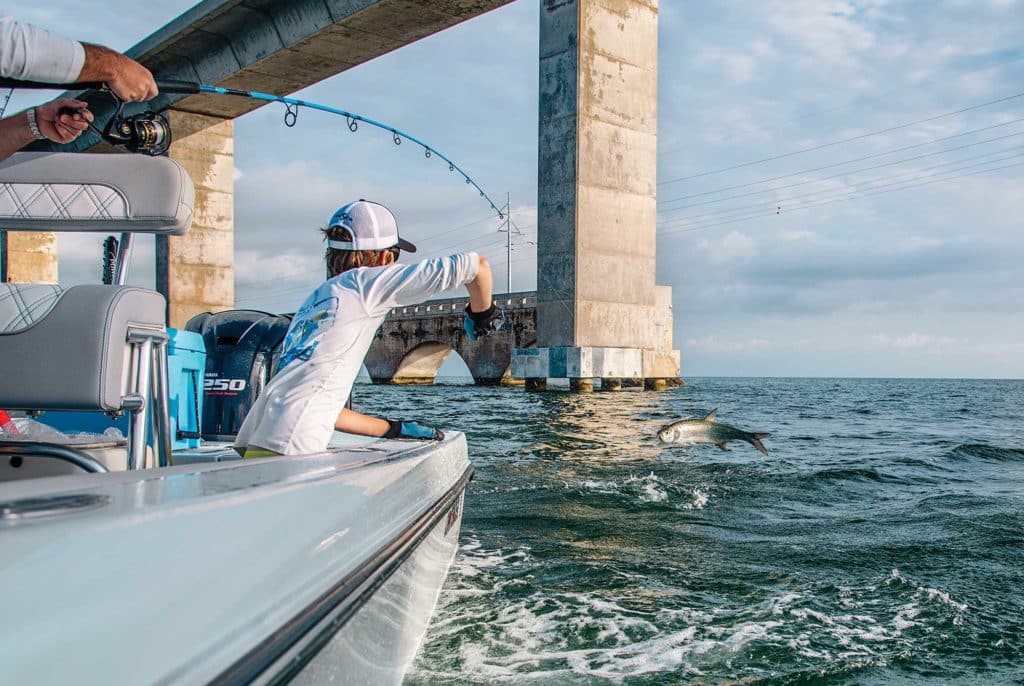
Bay Boats
By Glenn Law
The magic of the modern bay and coast boat in the 21- to 26-foot range is versatility, the melding of what were formerly two classes of boat: the inshore runabout or flats boat and the capable offshore-fishing platform.
Our survey indicated that more than 75 percent of respondents own just one boat, making this format the perfect choice for a range of anglers.
Offshore capable yet nimble enough for inshore access, design in bay and coastal boats pare down to a narrow judgment call and the old adage about every boat being a compromise. This class of craft finds an abundant market — our survey indicated that 60 percent of potential buyers were considering a boat under 25 feet.
“Our buyers have changed in the past 10 years,” says Capt. Larry Jett, manager of saltwater business development for Ranger Boats. “Following the economic downturn, buyers came back looking for one boat that does it all. They learned that they can have one boat that’s a serious fishing boat, offering plenty for the family as well.”
Shopping for a new bay boat might be an exciting proposition, but don’t let the gleam of gelcoat and brightwork overshadow practical prepurchase considerations; those oversights you’ll discover only once you’re on the water.
That said, bay and coastal boats run the gamut, from comfort-first designs to fishing-foremost. Accurate assessment of your needs and expectations should always drive the selection and buying decision.
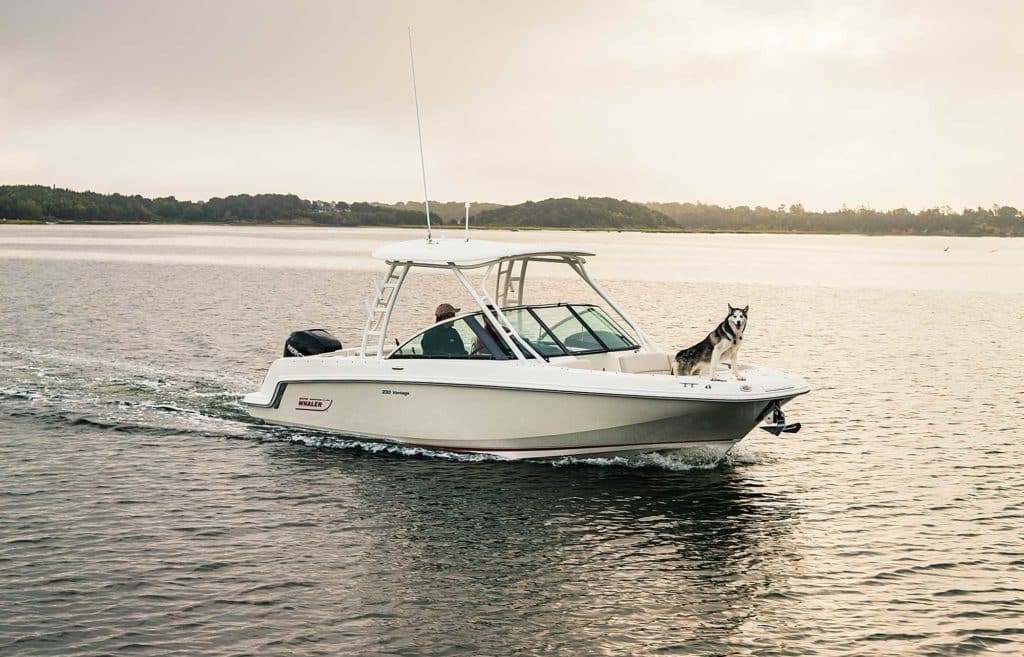
Accommodations
Seventy percent of respondents to our survey said a seaworthy, comfortable ride was the most important consideration in deciding which boat to buy, a priority scarcely lost on manufacturers.
“We put a lot of thought into how people feel when the boat is underway,” says Jeff Vaughn, vice president sales, marketing and service for Boston Whaler.
“When you are out fishing, there are a lot times when you are just standing around, and you want to be comfortable. We have lighter chines and our boats weigh a little more, and with foam flotation, our boats are very stable at rest.”
Layout considerations include distance between seating and the helm, cockpit arrangement, and a spacious bow area, all important to consider.
“We do a lot of ‘voice of the customer’ research,” Vaughn says. “Some boats aren’t designed to drive comfortably both sitting and standing. You wonder, What were they thinking? They weren’t thinking; it just happened.”
Alan Lang, director of sales and marketing for Scout Boats, known for high-end appointments, explains: “We see a big trend with people using their boat for more than just fishing. Buyers are interested in entertaining too, so we provide comfort and amenities for both, make it easy to maintain, easy to work on.
“Our Scout 251 Hybrid makes everyone happy. The rear casting deck converts to full transom seating; the casting deck in the bow transforms into a table or a sun pad.”
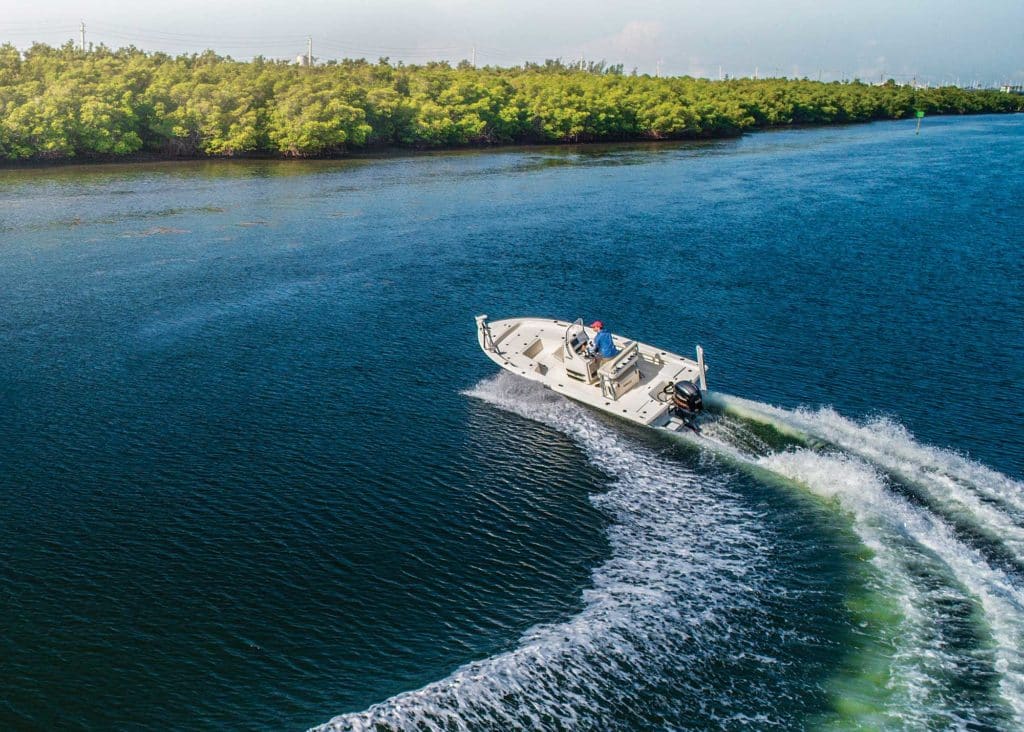
Tackle and Gear Storage
Well-designed stowage maximizes the limited space on a coastal boat called upon to do a number of jobs.
Fifty-five percent of respondents to our survey said they prefer removable tackle storage to house an average of six utility boxes for a day’s fishing.
Joe Neber of Contender Boats favors that approach in the 25 Bay. He prefers an open storage arrangement: plenty of room, compartmentalized, but designed to carry tackle or other gear that’s being used that day. “Contenders are built for fishermen, but we believe onboard storage is onboard rust creation,” he says.
Nonspecific storage lends itself especially well to a multipurpose boat. “What the family expects from the modern-day bay boat is versatility and utility: an SUV,” Neber says.
Ranger Boats maintains a focus on versatile storage areas, adaptable to a variety of purposes.
“Beneath our elevated front deck, we place lockable rod lockers, port and starboard, and we build in a 320-quart fish box and a 120-quart drink cooler that doubles as a livewell in the front step-up.”
But, he explains, the winning feature on Ranger bay boats is the console storage arrangement.
“If I had to pick one feature that is over the top in our boats, it’s the console, which offers a huge storage area. The entire front opens up, and it’s easy to access. Buyers are looking for plenty of space to have the family conveniences aboard.”
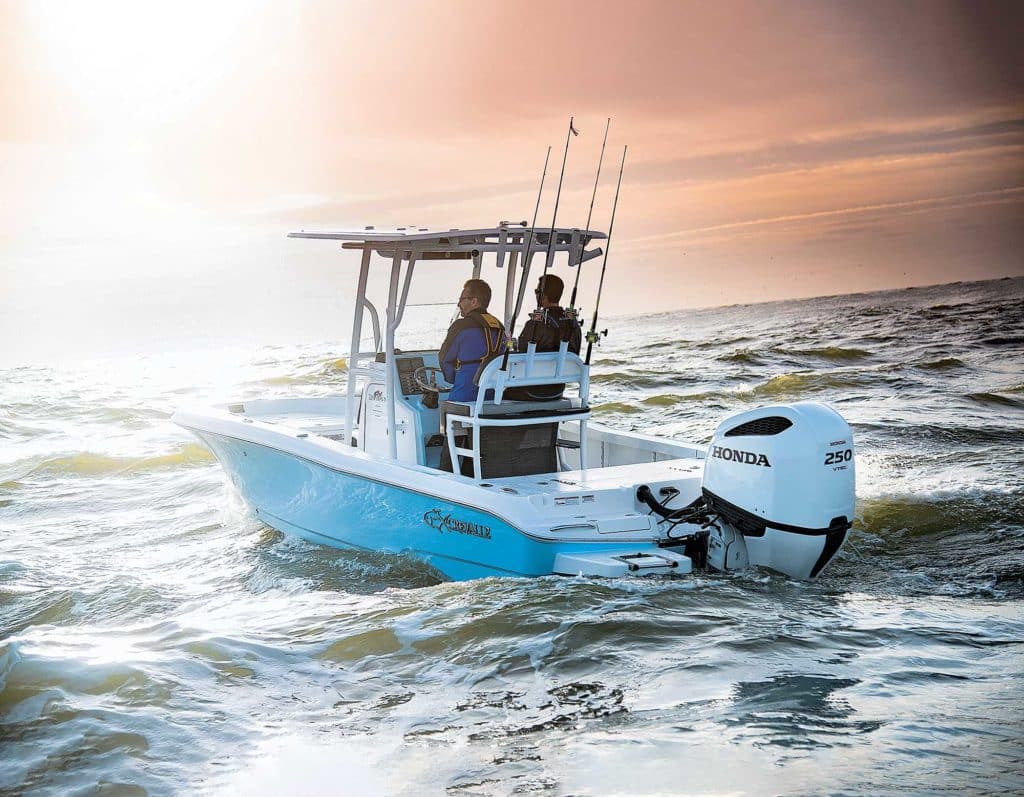
Rod Holders
Something as straightforward and simple as rod holders and storage scarcely seem critical, and it might be so on the showroom floor, but it’s a different matter on the water, where a missed opportunity or the nuisance of rods underfoot takes on a different complexion.
While some rod holders are standard on all boats, not all fishing styles are standard. Be generous when considering additional rod holders and how you’ll use them.
Will your rods stay in storage lockers, or do you want them out and available, ready to deploy?
Holders on the back of the helm bolster or along the aft edge of a T-top keep them ready at hand. Plenty of holders bow to stern along the gunwales ensures one is always in reach.
Respondents to our survey carried an average of seven rods on their boat on fishing trips, with 52 percent stating they needed space to carry seven to 12 rods.
Offshore fishermen specified they need at least six gunwale rod holders; inshore anglers were content with four.
It’s a personal decision, but one better made before you place the order for your new boat, and especially before you find yourself groping for a rod holder.
Editor’s Tip: A T-top or hardtop comes standard on some bay- and coastal-boat models; on others, it’s an option, like a tower or second helm station. Rather than wait for aftermarket additions, consider ordering your boat with the desired top and metal fabrication to ensure ideal placement and installation, and spread the costs over the life of your loan.
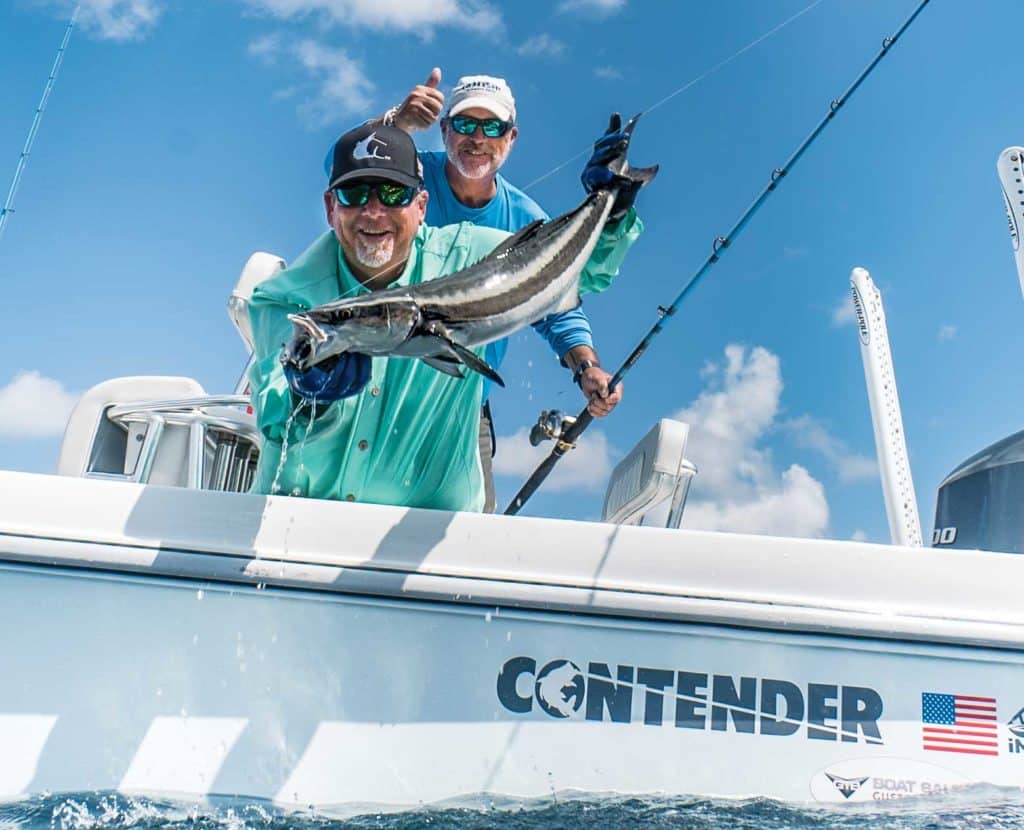
Livewells
When it comes to personal fishing preferences and styles, nothing emerges as a make-it-or-break-it consideration so much as livewells.
Results from our survey indicate that 85 percent of respondents fish with live bait sometimes, and 50 percent of those fish live baits “often” or “always.”
Nearly two thirds of live-bait anglers said they need capacity to carry large baits, and a third of them prefer two livewells — one forward and one aft.
Livewell demands vary widely. All manufacturers provide stock wells, but they are also well aware that one configuration doesn’t fit all.
“Florida anglers’ needs for carrying live bait are different from those on Long Island,” Vaughn says, “ so we customize livewells for different regions.”
Even within regions, preferences and needs vary. It pays to determine the kind of baits you’ll be using and make sure your livewell is suited for what you’ll demand of it.
“Our Contender 25 comes with a 40-gallon floor well and a five-gallon crab well,” Neber says. “We use a big standpipe system, with through-hull and electric-pump overflows. That works a lot better with baits that you’re cast-netting, and especially if you have to deal with weeds in the livewell, which tend to clog a bottom-drain system.”
Neber says he also offers pump upgrades and sea-chest upgrades, and installs a lot of 50-gallon “campaigners” in the bows, especially in South Florida, the Keys and the Palm Beaches.
Capacity is critical in keeping baits in top shape. Sixty-four percent of survey respondents who fish live baits normally carry a few dozen baits for a day’s fishing.
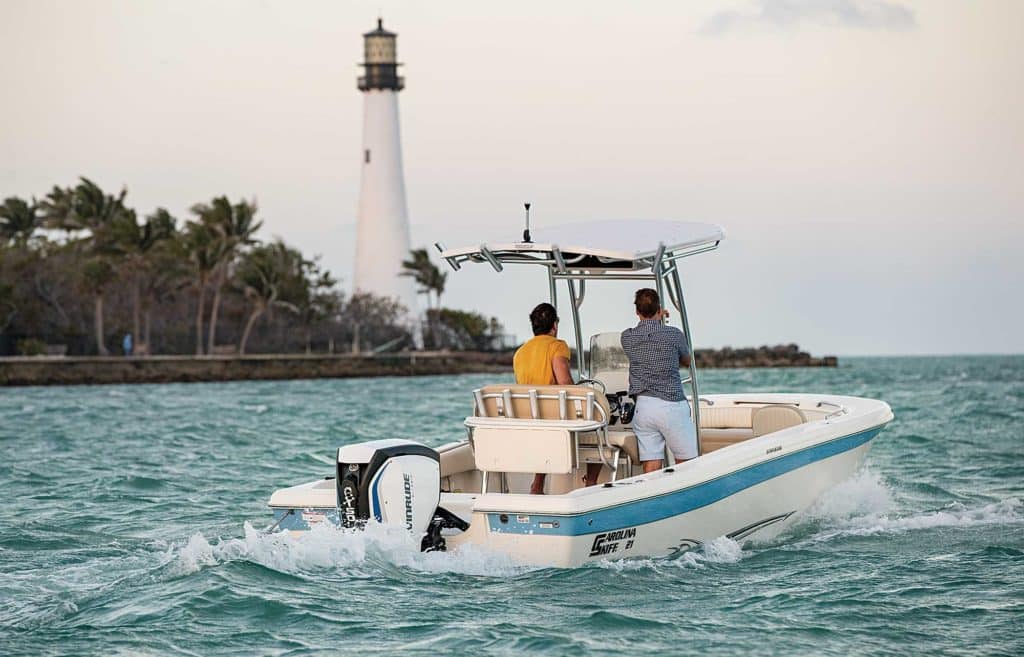
Horsepower Requirements
Powering a new boat offers a balance between economy and top-end performance. You don’t have to match the horsepower rating of a hull to get satisfactory performance.
“I often see more horsepower on boats than is required,” Vaughn says. “They put on more than they really need.”
Jett sees the same trend at Ranger: “A lot of people buy the maximum on our boat, the 350. But even the ones who buy the 300 are satisfied,” he says.
Ranger hangs Mercury and Yamaha engines, about 50-50, and there are buyers for Evinrude as well. “Evinrude has a lot to talk about. Maintenance is minimal, and they weigh less. The Evinrude G2, the futuristic motor, has a light fuel burn and low maintenance, and it has great hole shot and low-end torque.”
Performance with the chosen power is a second consideration. Contender in particular is synonymous with performance. “We make boats designed to go upwards of 60 miles per hour,” Neber says. As such, he’s a big proponent of the step hull, which boosts speed, with a diminished wetted running surface, as well as other advantages. “We took identical layouts — same weight, length and beam — and put a step hull under one of them. It handled better in offshore conditions, was more stable, and provided 20 percent better fuel efficiency,” he says.
With an eye toward shallow-water performance, Neber says a jack plate comes standard on the Contender 25 as well.
Mechanical Systems
The mechanics, plumbing, hinges, latches and fit-and-finish on any quality boat are pretty much a settled matter in this competitive market. When things don’t work right, buyers are dissatisfied, and manufacturers and dealers — plagued with repairs — rapidly remedy the situation.
However, some add-ons and accessories bear some consideration, such as the anchoring system and trolling motors, both especially useful on boats that see inshore-fishing or even Sunday sandbar duty.
Our survey revealed that 64 percent of respondents have a trolling motor on their boats, and 73 percent have at least one electrical shallow-water anchoring system, such as a Power Pole.
Even if you don’t fit out with these options originally, it pays off to have the wiring installed during the build, ready for the additions. These accessories also require some forethought in battery configurations.
“Usually with our boats,” Jett says, “the customer is asking for a 36-volt trolling motor with three batteries and two house batteries. We’re putting four batteries in and sharing one: two for starting and three for trolling, along with an integral four-bank charger, which makes for plug-and-play hassle-free charging.
If weight and simplicity are a concern, Neber says: “We rig a lot of 36-volt lithium batteries. It’s about a $4,000 upgrade, but it’s a 36-pound battery versus three 80-pound batteries.”
Keep your eyes open as you shop for that new boat. Choosing the perfect all-rounder is no time to skimp. It’s an investment in success and enjoyment.
Once you’ve determined your needs and balanced that against a realistic budget, the most important thing you can do in terms of ensuring long-term satisfaction and enjoyment, is to buy what you want. Don’t expect you’ll add the things you really want and need at a later date.
That often turns out to be wishful thinking.
No matter how much time you spend researching and quantifying your needs, it’s for naught if you are not satisfied with the boat when you jump aboard in the morning.
Trends in the market reinforce this approach.
“People have learned not to skimp,” Jett says. “Nor to assemble the boat they really want in steps. The attitude seems to be, ‘This is my opportunity, so let’s load up our boat with all the things we’ll use.’”
Editor’s Tip: Most flats- and bay-boat builders offer a Power Pole or Talon shallow-water anchoring system as an option. Both afford considerable advantages over conventional anchoring but offering different features. See which suits your needs best; an authorized dealer can install either later if you need to keep the boat’s purchase price down.

